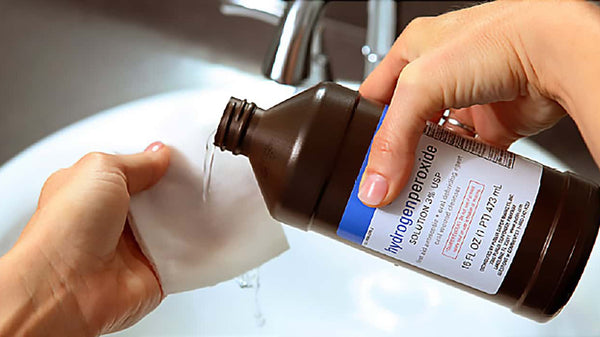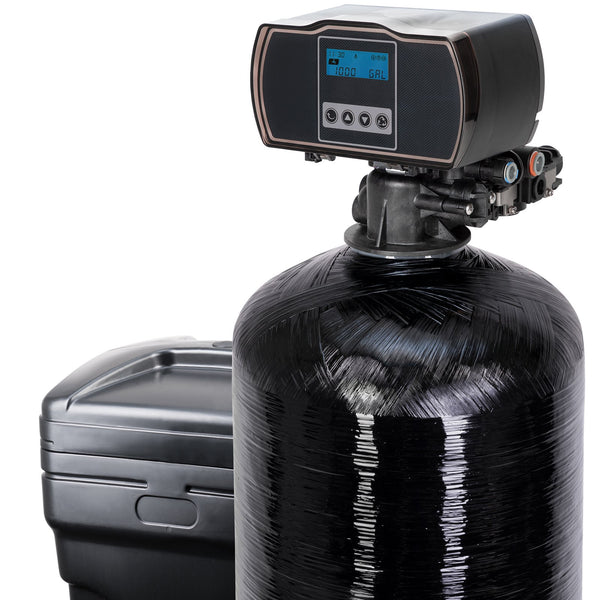In this guide, we’ll be sharing some great tips when it comes to cleaning your bathrooms at home. These cleaning tips will help save you time and money and reduces the amount of elbow grease required for future cleaning endeavors.

- RainX on Shower Doors-This product has been around for years and it’s designed to be sprayed onto car windshields to help repel water during the rainy season. But it proves to be useful in the bathroom when used on shower doors. The beauty of this tip is that you’ll be able to see the water bead as you’re taking a shower.
Before applying RainX, make sure the shower doors are clean. Then spray liberally and use a paper towel to distribute the liquid all over the glass. Wait 5-10 minutes to allow the liquid to cure, then after that, you’re able to take a shower and you’ll notice that the water beads and run down the glass. To top off this tip, use a small squeegee to clean the glass off after each shower. This ensures that no water spots form on the glass.

- Remove soap scum with ammonia- This product one of the cheapest things you can buy to clean your bathroom. A ½ gallon container of pure ammonia generally costs less than $1.00 at any local store and it has hundreds of uses in the home. One of the best things ammonia does is melt away soap scum. Simply mix 1 cup of ammonia for every gallon of water and spray onto shower surfaces or bathtubs, scrub and rinse away. For stubborn and caked-on soap scum, use ammonia directly, do not dilute. However, make sure your work area is properly ventilated since ammonia fumes can cause immediate eye and throat irritation.

- Pumice stone for hard water toilet stains- Nothing is more unsightly than hard water stains in a toilet bowl. It gives the impression that someone left their business there and didn’t flush. Or it makes the bowl look unclean. No matter how many times you’ve used toilet bowl cleaners, the stains are still there. The best way to address tough hard water stains is to use a pumice stone. These can be purchased from just about every grocery store for a few dollars. The pumice is abrasive enough to cut down on the mineral build-up on the bowl, but not too aggressive where it damages the porcelain. When all the chemicals have failed, it’s time to bring in the pumice stone. The only downside is you’ll need to stick your hand in the bowl to get rid of the stains.

-
Hydrogen peroxide for cleaning-This fluid isn’t just for cuts and scapes, it has some remarkable uses in the bathroom. Not only can it help remove soap scum, but it can treat mold and mildew on surfaces. Simply spray some on and let it sit for a few minutes. The black traces of the mildew will start to disappear. The basic 3% hydrogen peroxide from your local drug store is strong enough to handle most jobs. But there is a stronger version that is 20% that are sold at beauty supply shops. There’s no need to dilute the peroxide, spray directly on the affected area. Be careful with the 20%, it can burn your skin. You’ll know it’s burning because it will start to sting and it leaves it white. Keep in mind, it can kill mold, but it will not get rid of the stain it has caused.

- Keep microfiber towels handy- These types of towels are very useful in a bathroom. They can absorb fluids well and can be used to clean the whole bathroom. One thing you can use them for is to wipe the mirror clean after each shower. The reason why your mirror fogs up after a shower is that there are dust particles stuck on it. When your shower has the hot water flowing, the water vapors in the form of steam, attach themselves to the dust, which leaves you a foggy mirror. Wiping off the moisture after each shower or bath will help to keep your mirror clean and dust-free. Now when guests come over, you don’t have to worry about cleaning it again.

- Last but not least, get a whole house water softener. Yes, this is considered a bathroom cleaning tip. If you haven’t noticed, the previous tips address problems caused by hard water. Soap scum forms because the minerals in hard water react with the soap, which prevents it’s from properly lathering, instead, it creates a substrate that forms on surfaces throughout the shower and bathtub. This substrate is commonly known as soap scum and it’s very annoying and can lead to draining problems in the shower’s plumbing. The scum can build up over time and clog drains. If you had a water softener installed, water becomes free of calcium and magnesium, and that means no scum is created. This leaves your shower and tub much cleaner and you won’t have to deal with the scum anymore.
As mentioned, soft water is devoid of hard water minerals. This means limescale stains in toilets will be a thing of the past. Calcium and magnesium won’t form in the bowl or around the rim jets as they used to, making the need for harsh chemicals or pumice stones obsolete.
These tips were arranged to provide anyone an advantage when it came to maintaining their bathroom. The cleaning supplies mentioned are readily available at most stores and they do provide some amazing results especially if the home in question is not using a whole house water softener like the Aquasure Harmony Series. However, if they choose to upgrade to a water softener, many of the problems above could be completely avoided.




